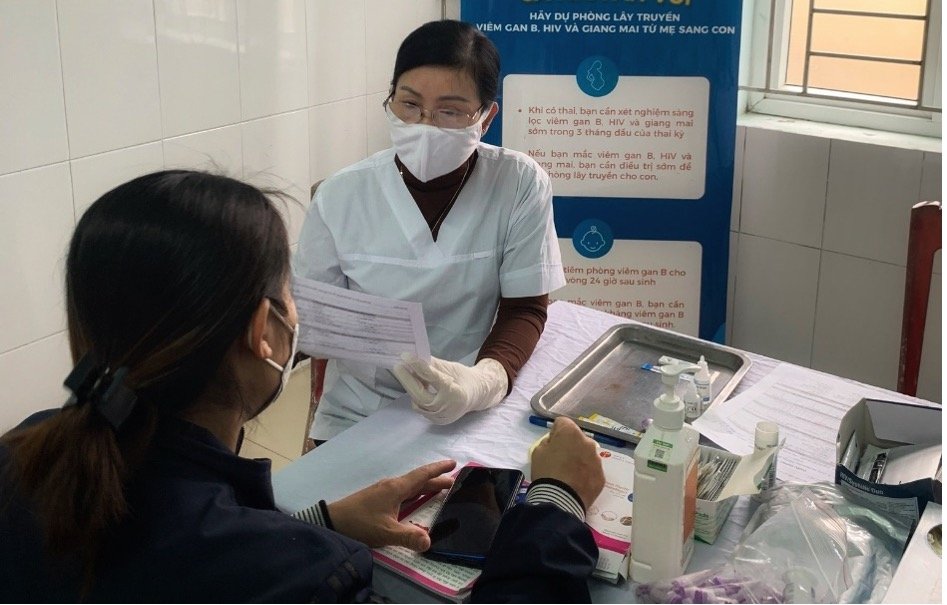HBV and HIV share common transmission routes as well as a common treatment method: an antiviral medication called tenofovir. As the tenofovir drug regimen is effective for both treating HBV and preventing and treating HIV, the hepatitis-HIV integrated model can create a unique opportunity for people to access HBV and HIV services at the same time.
40-year-old Nam Anh*, a gay man from Hanoi, is one individual who has benefitted from this lifesaving treatment.
Since 2020, Anh has visited Glink Hanoi, a private clinic that primarily services gay men, transgender women, and female sex workers, where he receives periodic HIV testing and pre-exposure prophylaxis (PrEP), a daily oral pill to prevent HIV infection. At Glink, Anh was counseled to test for HBV and HCV alongside his HIV prevention care.
When he received a positive result for HBV, he immediately discussed his options with a Glink counselor who had been trained by the HepLINK project on counseling and evaluating clients for HBV treatment: “I was very worried and quite anxious. I was hoping to be treated as soon as possible so that the disease would not affect my health as much. Staff from Glink helped to counsel me on my treatment options right away.”
Glink staff provided counseling to Anh and indicated that the PrEP treatment he receives to prevent HIV infection (using a tenofovir and emtricitabine regimen) also effectively acts to treat HBV. Today, Anh continues to receive PrEP for HIV prevention and HBV treatment services at Glink, and he advocates for those in his community to seek testing like him: “The best message I could give is to encourage people to seek hepatitis B and C testing as soon as possible and at all ages. The earlier the disease is detected, the more effective the treatment will be.”
Accelerating hepatitis diagnosis and treatment in Vietnam (HepLINK)
Grantee: PATH
The project aimed at demonstrating the cost-effectiveness of a decentralized and integrated model of viral hepatitis service delivery.
From April 2021 until August 2022, over 20,000 vulnerable individuals were screened for HBV and HCV, with approximately 900 receiving treatments for HCV and 500 enrolled in HBV treatment.


